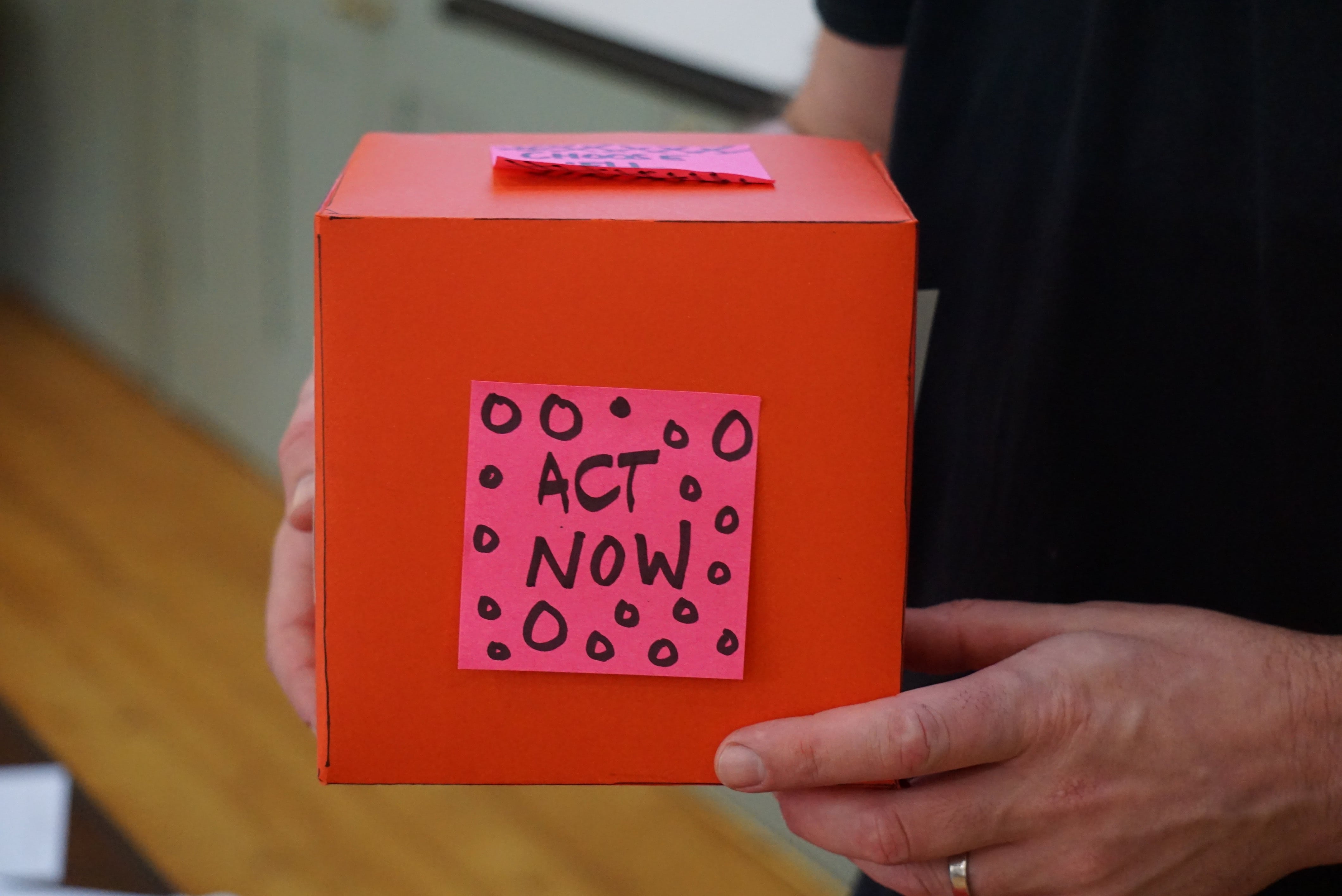Il m’est aujourd’hui assez difficile de parler d’Agilité sans parler de complexité et du framework Cynefin. Malgré mon fort intérêt théorique pour le modèle, j’ai bien conscience qu’un atelier pratique serait bienvenu pour introduire le sujet de manière plus légère. N’étant pas particulièrement fan du Cynefin Lego Game (à tort ou à raison), je me suis lancé à la recherche d’une alternative que j’ai finalement trouvée sur le site de Dandy People.
C’est ce que je vous propose de découvrir dans cet article ! 🙂
L’atelier

Comme vous le savez, j’affectionne tout particulièrement les ateliers courts qui ne nécessitent pas beaucoup de matériel, ou tout du moins peu de matériel spécifique.
C’est exactement ce que l’on retrouve ici :
- pas de matériel nécessaire,
- juste un espace permettant aux personnes de se déplacer,
- une durée d’environ 15 minutes (selon le débriefing que vous souhaitez y apporter).
Un petit peu à la mode Walk / Stop, vous allez donner une série d’instructions aux participants qui vont devoir y répondre physiquement dans l’espace.
Tour 1 : Domaine Évident
Instruction
Pour ce premier tour, l’instruction que l’on donne aux participants est la suivante :
Formez une ligne par ordre de taille
| Note : Penser à préciser à quels endroits se trouvent le plus grand et le plus petit pour éviter les doutes. |
Déroulement
- Les participants se placent naturellement les uns à côté des autres en s’observant mutuellement
- Certaines personnes prennent parfois le lead en corrigeant les potentielles erreurs. Ce leadership est très rarement remis en cause.
- Le résultat est atteint en moins d’une minute.
Débriefing
- Le mode de prise de décision est rapide car la problématique apparaît suffisamment simple pour tout le monde : la visualisation du résultat est commune et directe.
- L’auto-organisation est possible et chacun peut agir en conscience.
- Le leadership s’exprime librement et est naturellement écouté, non pas comme une autorité écrasante mais généralement comme un levier d’action pour le groupe.
- Pour introduire Cynefin, nous sommes dans le domaine de l’Évident, la stratégie associée est : Sentir – Catégoriser – Répondre.
- Sentir : perception de la problématique
- Catégoriser : le problème peut être résolu par simple regard
- Répondre : mise en oeuvre immédiate
Tour 2 : Domaine Compliqué
Instruction
Pour ce deuxième tour, l’instruction est la suivante :
En gardant cette variable de taille que vous avez obtenue au premier tour,
ajoutez-y la variable du temps que vous mettez pour venir au travail le matin.
| Note : L’idée principale est de rajouter une variable dans l’équation. Vous pouvez utiliser un temps (comme dans l’exemple ci-dessus) ou une distance par exemple. |
Déroulement
- Il y a souvent un moment de chaos au départ, les personnes ne comprenant pas vraiment la consigne : en effet, comment combiner la notion de taille avec la notion de temps (ou distance) ?
- Certaines personnes remettent d’ailleurs la consigne en question en disant que ce n’est pas possible.
- De nombreuses discussions peuvent émerger quant à la meilleure manière de répondre à la problématique : un brin de facilitation est parfois nécessaire.
- Généralement, au bout d’un moment, une personne va proposer au groupe de s’organiser autour de 2 axes :
- L’un correspondant à la taille (comme au tour précédent)
- L’autre correspondant au temps pour venir au travail le matin
- Le groupe définit alors rapidement une échelle pour le second axe et se met rapidement en action
| Note : Il peut arriver parfois que le groupe n’ait pas l’idée de se mettre sur 2 axes et tourne en rond en discussions. Il m’arrive alors de leur donner une piste ou la solution afin que le groupe se mette en mouvement. Vous verrez, cela n’empêche pas de débriefer 🙂 |
Débriefing
- Dans ce tour, nous sommes dans une problématique du domaine du compliqué.
- Selon Cynefin, la stratégie de résolution associée est la suivante : Sentir – Analyser – Répondre. On voit d’ailleurs que c’est véritablement ce qu’il se passe.
- Sentir : perception de la problématique.
- Analyser : discussions autour de la meilleure solution
- Répondre : mise en oeuvre de la solution
- Dit autrement, le domaine du compliqué ressemble beaucoup au domaine de l’évident, on y rajoute simplement une notion de délai entre la perception de la problématique et la mise en oeuvre de la solution. Délai qui dans certains cas peut être particulièrement long.
- En effet, alors que l’on voit le groupe se mettre en mouvement immédiatement dans le premier tour, le groupe va plutôt se questionner / s’interroger / débattre pendant un certain temps avant de finalement s’accorder sur une solution et se mettre en mouvement. Cela ne vous rappelle t-il pas quelque chose ? 😛
- On considère le domaine Compliqué comme le domaine des Experts : il suffit qu’une personne du groupe (ou moi en tant qu’animateur) donne un élément de solution et le groupe se met en mouvement presque immédiatement.
Tour 3 : Domaine Complexe
Instruction
Pour ce troisième tour, l’instruction que l’on donne aux participants est la suivante :
Choisissez une personne dans le groupe.
Estimez le nombre de pas nécessaires pour la rejoindre.
Levez la main ensuite pour indiquer que c’est fait.
Lorsque tout le monde lève la main indiquant qu’il est prêt :
Et bien maintenant allez-y et vérifiez.
Déroulement
- Le groupe est rapide à choisir une personne et à estimer le nombre de pas nécessaire.
- Lorsque la seconde instruction arrive, on voit les personnes faire ce premier pas après lequel les personnes s’arrêtent, se rendant compte que tout le monde bouge en même temps, ce qui fausse totalement leur prévision.
- Le tour s’arrête alors rapidement.
| Note : Certaines personnes foncent néanmoins tête baissée à l’endroit où la personne se trouvait, même si elle ne l’est plus. |
Débriefing
- Nous sommes ici dans une problématique du domaine du Complexe ou de multitude d’éléments sont interconnectés.
- Selon Cynefin, la stratégie associée est : Sonder – Sentir – Répondre
- Sonder : Effectuer une mesure (cela peut être un pas et une observation du résultat sur l’ensemble)
- Sentir : Revoir la problématique sous ce nouvel angle
- Répondre : Continuer si l’on va dans la bonne direction ou modifier la trajectoire si l’on va dans la mauvaise direction
- On est donc bien dans le domaine de l’expérimentation où il n’est pas possible de tout prévoir à l’avance car il y a trop de variables qui bougent en même temps.
- Cependant, il arrive souvent que l’on utilise une stratégie du domaine du compliqué pour aborder des problématiques complexes. Dans notre cas, cela voudrait dire analyser l’ensemble des mouvements potentiels de chaque personne pour pouvoir adapter le chemin à prendre pour les rejoindre à un instant t et donc comptabiliser le nombre de pas nécessaire. Ce serait une perte de temps phénoménale n’est-ce pas ? Dans ce cadre, l’auto-organisation est une bonne manière d’appréhender le problème.
- On traite ici plutôt un système vivant et non plus mécanique.
- La stratégie proposée par le domaine de la complexité est de tester (prototyper) et de s’adapter, ce qui est une réponse plus rapide (et généralement moins coûteuse) à une problématique de cette nature.
Conclusion

Cet atelier est un de mes favoris du moment : il est simple, rapide et surtout met en place une expérience qui permet aux participant(e)s de se rendre compte par la pratique de différentes stratégies possibles par rapport à une problématique.
Introduire la complexité par la comparaison m’apparaît être une très bonne manière de faire, surtout par rapport à la stratégie du Compliqué qui nous joue souvent des tours !
Les retours que j’ai eu jusqu’ici sont très bons car ce premier pas effectué par les participants avec l’ensemble des pièces qui bougent en même temps fait souvent son effet ! 😉
Je vous invite à le tester et à me dire ce que vous en pensez ! 🙂










10 réponses
Bonjour Olivier,
Je cherchais justement un atelier pour faire mieux appréhender les notions de complexité (qui sont trop souvent assimilées à des notions de temps de travail). Merci pour cet atelier qui m’a l’air vraiment simple, et limpide!
Yohan
Super cet atelier!
Comme Yohan le mentionne, je pense que trop souvent la notion de complexité est mal perçue, et associée presqu’exclusivement à une notion d’effort, ou de temps. Un tel exercice pourra démontrer à nos équipes que la complexité n’est pas nécessairement que relié à cette dimension temporelle.
Atelier expérimenté: il fait son petit effet 🙂
La difficulté de l’atelier réside vraiment dans la compréhension des participants sur la dernière notion de complexe. Durant le débriefing, les participants ont eu tendance à vouloir trouver une réponse au problème en analysant la demande initiale, et en la remettant en cause.
Après quelques échanges et précisions, le groupe a commencé à bien comprendre la notion en parlant d’une solution purement agile pour répondre au problème (on fait un pas, on compte, on ajuste le trajet, on recommence …).
Et la boucle est bouclée 🙂
En tout cas, merci Olivier!
Super Yohan, tu as été rapide à le tester !
Merci pour le feedback, tu remets en lumière l’importance des échanges autour du débriefing sans quoi l’activité perdrait de son sens ! 🙂
Au plaisir !
Bonjour Olivier !
Merci pour ce partage, l’atelier me semble tout a fait approprié. Je trouve excellent le fait de ne oas avoir de matériel a préparer et qu’il y ait un debrief a chaque etape. Hate de pouvoir le mettre en pratique avec mes prochains groupes.
Hello Olivier, merci pour ce partage éclairant (encore une fois).
Pour illustrer le chaos, quelle idée de consigne aurais tu ?
Que penses tu de demander aux participants » vous êtes un groupe, classez vous, sans parler’ ?
A bientôt Kervin
Hello Kervin,
Je me suis posé la question fusse un temps puis me suis ravisé en me disant que la description de l’environnement chaotique n’apportait peut-être pas grand chose (surtout que si l’on voulait être plus complet, il faudrait peut-être tenter de décrire le désordre – et pour le coup je n’aurais pas su faire !).
La difficulté de l’environnement chaotique de par ce que j’en comprends c’est que c’est avant tout un système instable. Ce que dit Snowden à ce sujet est qu’il est généralement difficile de créer un environnement chaotique de manière pérenne vu qu’il va tendre à se stabiliser très rapidement.
Lorsque je pense à une situation chaotique, j’ai parfois en tête une foule qui discute et dont le son cumulé ne fait qu’augmenter. Si l’on ne fait rien pour arrêter cela, cela pourrait devenir dangereux pour notre survie psychologique ! Une manière d’y répondre pourrait être de crier un bon coup, ce qui décrirait la stratégie associée du : Agir, Sentir, Répondre et qui stabiliserait le système dans le même temps.
Olivier
Nice !!! hate de le tester et de voir le chaos généré par le 3eme round !!!
Je propose un 4ème tour
Répartissez-vous dans l’espace : « Faites des groupes, sans parler »
Débrief : Comment vous êtes-vous senti ? Passé le léger moment de flottement, vous vous êtes mis en mouvement, vous avez expérimenté le chaos. Puis quelqu’un a proposé une vision ‘groupes par couleurs de chaussettes’ par exemple (complexe, solution émergente), puis vous êtes passé dans le compliqué (chacun a proposé sa solution) et lorsque vous vous êtes mis d’accord qu’il fallait relever un peu les ourlets du pantalon vous étiez dans le simple.
Super merci pour ton partage Kervin ! 🙂